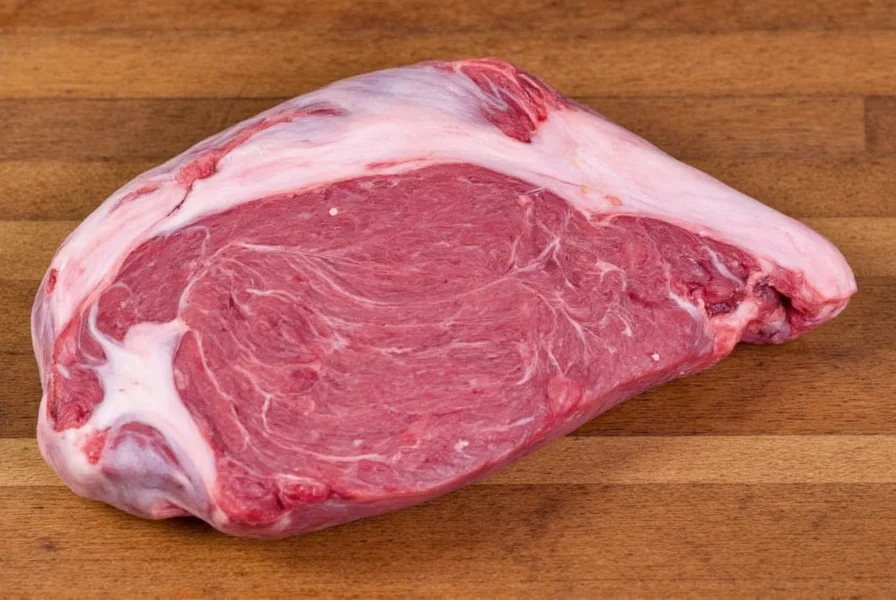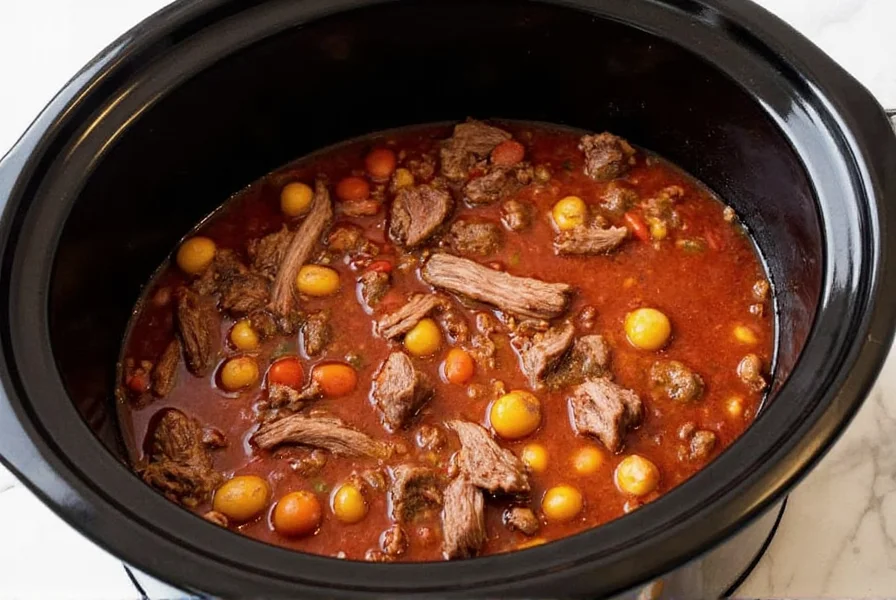When considering brisket for chili, many home cooks wonder if this premium barbecue cut translates well to the beloved stew. The answer is a resounding yes—with proper technique. Unlike leaner cuts that can dry out, brisket's generous marbling and collagen transform during extended cooking, yielding a chili with unparalleled depth and mouthfeel that elevates the dish from ordinary to extraordinary.
Why Brisket Outperforms Traditional Chili Meats
Brisket's unique composition makes it ideal for chili preparation. The point cut of brisket for chili contains approximately 30% fat content compared to chuck's 15-20%, which renders down during cooking to create natural richness without needing additional oils. This intramuscular fat carries flavor compounds that infuse the entire batch, while the abundant collagen converts to gelatin, giving your chili that coveted silky texture that coats the spoon.
Professional pitmasters and chefs increasingly recommend using brisket instead of ground beef for chili because ground meat often becomes crumbly and loses moisture during prolonged simmering. Brisket maintains structural integrity while becoming fork-tender, providing satisfying meat chunks throughout your chili rather than disintegrated particles.

Selecting the Perfect Brisket for Your Chili
Not all brisket works equally well for chili. Understanding the best cut of brisket for chili is crucial:
| Cut Type | Fat Content | Best For Chili? | Preparation Tip |
|---|---|---|---|
| Point Cut | 25-30% | ★★★★★ | Trim excess hard fat, cube 1" pieces |
| Flat Cut | 10-15% | ★★☆☆☆ | Requires additional fat, risk of drying |
| Packaged 'Chili Meat' | Variable | ★☆☆☆☆ | Often pre-cut too small, inconsistent quality |
The point cut (also called the deckle) delivers superior results for smoked brisket chili recipe applications because of its higher fat content and irregular shape that holds up better during cooking. Avoid pre-cut 'chili meat' packages which often contain inconsistent pieces that overcook.
Proper Preparation Techniques for Brisket Chili
How you prepare brisket dramatically affects your final chili. Follow these steps for how to cook brisket for chili properly:
- Trim strategically: Remove hard fat deposits but retain 1/4" fat cap—this renders during cooking for flavor
- Cube uniformly: Cut into 1" cubes with sharp knife—too small and it disappears, too large and it won't tenderize properly
- Sear thoroughly: Brown all sides in batches over medium-high heat—don't rush this Maillard reaction step
- Deglaze properly: Scrape fond from pan with beer or broth before adding to chili base
Many home cooks make the mistake of skipping the sear or cutting brisket too small. The brisket chili cooking time requires patience—rushing the sear creates steamed rather than caramelized meat, while undersized pieces dissolve into the broth rather than providing satisfying meat chunks.

Cooking Methods Compared
While traditional stovetop works, modern methods offer advantages for slow cooker brisket chili preparation:
- Stovetop: Requires monitoring but allows for easy flavor adjustments; cook 3-4 hours on low simmer
- Slow cooker: Ideal for hands-off cooking; use high for 4 hours or low for 8 hours for easy brisket chili recipe
- Instant Pot: Pressure cook 45 minutes followed by natural release for time-pressed cooks
- Smoker: For authentic smoked brisket chili recipe, cook at 225°F for 6-8 hours for complex flavor
Flavor Pairings That Enhance Brisket Chili
Brisket's rich profile pairs beautifully with specific ingredients that complement rather than overwhelm:
- Acidic elements: 2 tbsp apple cider vinegar or fresh lime juice added at end balances richness
- Umami boosters: 1-2 oz dark chocolate or 1 tbsp fish sauce deepens flavor complexity
- Spice balance: Ancho chilies provide earthiness while chipotle adds smokiness without excessive heat
- Texture contrast: Top with crisp tortilla strips or fried onions to contrast the tender meat
Common Mistakes to Avoid
Even experienced cooks make these errors when using brisket vs chuck for chili:
- Over-trimming fat: Brisket needs its fat to stay moist—trim only hard white fat deposits
- Boiling instead of simmering: High heat makes meat tough rather than tender
- Adding liquid too early: Sear meat thoroughly before adding broth for best flavor development
- Underseasoning: Brisket's richness requires more seasoning than leaner meats—taste and adjust
Storage and Reheating Tips
Brisket chili improves with time as flavors meld. For best results:
- Cool completely before refrigerating in airtight containers
- Store up to 5 days in refrigerator or freeze for 3 months
- Reheat gently on stove with splash of broth to restore moisture
- Avoid microwave reheating which can make meat rubbery
Why Brisket Makes Superior Chili
When comparing brisket for chili versus traditional options, the advantages become clear. The collagen-rich connective tissue breaks down into gelatin during slow cooking, creating a luxurious mouthfeel that ground beef simply cannot match. This natural thickening eliminates the need for flour or masa as thickeners while providing body to the broth. The marbling distributes flavor throughout the entire batch rather than just on the surface of leaner cuts.
Professional chefs consistently choose brisket for competition chili because it delivers consistent results and complex flavor development. Whether you're making a simple brisket chili recipe for weeknight dinner or an elaborate smoked version for game day, understanding how to properly select and prepare this cut transforms your chili from ordinary to exceptional.











 浙公网安备
33010002000092号
浙公网安备
33010002000092号 浙B2-20120091-4
浙B2-20120091-4